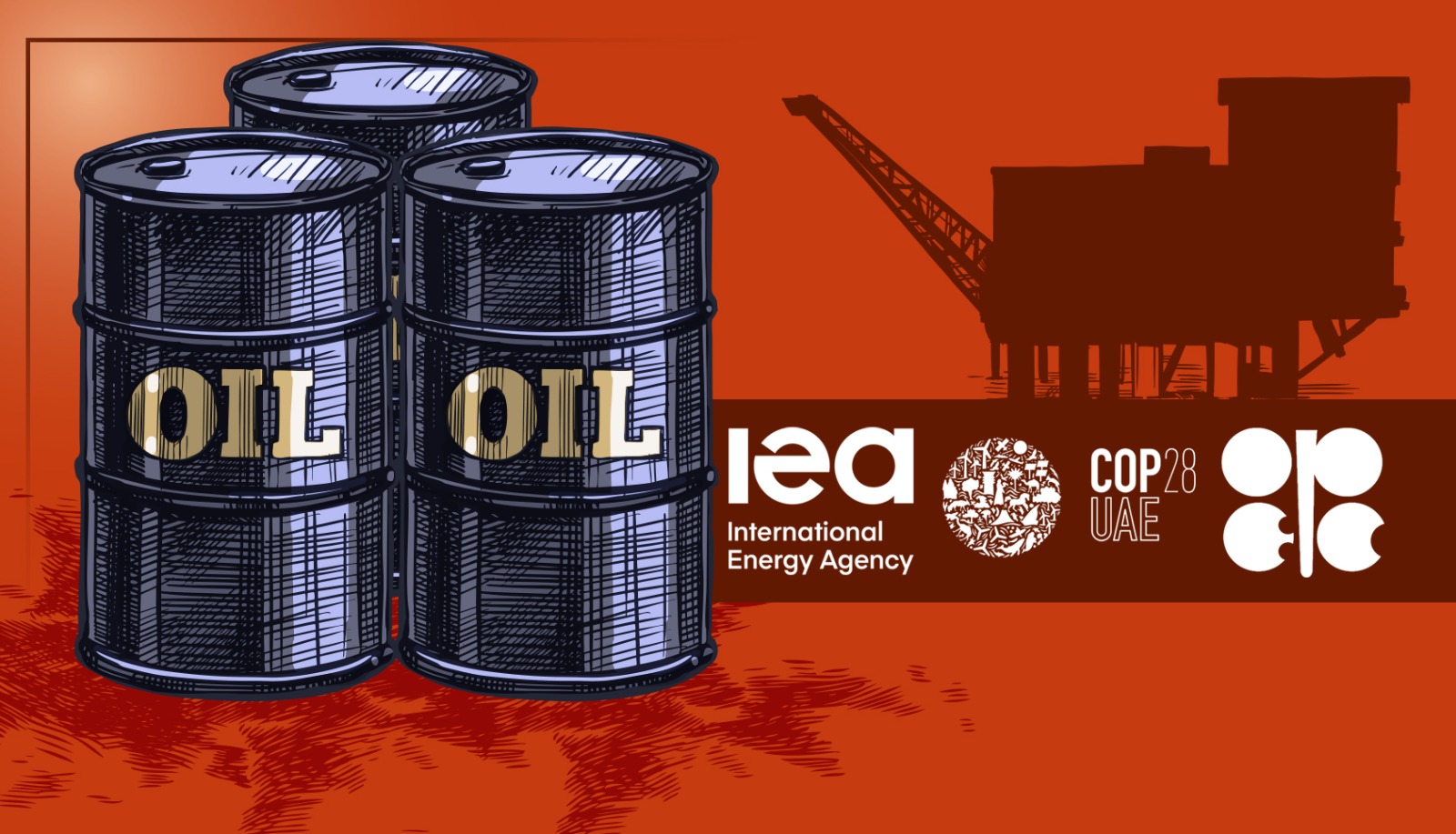As the world eagerly awaits COP 28, a significant United Nations and UAE summit dedicated to addressing, adapting, and allocating funds for mitigating natural disasters and climate change impacts on Earth. Global markets stand in anticipation of decisions stemming from the postponed meeting of OPEC and OPEC Plus. The Conference of the Parties (COP), formerly COP3, has convened in Japan since the 1990s and is poised to take place in Abu Dhabi, UAE, in the imminent days.
As per the data available, over 70,000 participants, including heads of state, prime ministers, decision-makers, scientists, experts, and members of international organizations, are mobilizing funding for projects combatting climate change and addressing the impacts of floods, droughts, deforestation, especially in Third World or developing countries.
Recent observations this month hint at divergent paths. Notably, OPEC responded to the latest IEA report on oil and climate change, "Oil and gas producers confront a pivotal decision regarding their impact on the global energy landscape: exacerbating the climate crisis or mitigating it, a dilemma primarily shaped by the nature of their products," stated the International Energy Agency in a recent report. OPEC Secretary-General Haitham al-Ghais emphasized that OPEC and OPEC Plus aim not only to influence oil prices but also to prioritize market principles and the crucial role of oil investment required by the world.
Furthermore, there's a contrast in oil production forecasts for the upcoming years. OPEC envisions a growth of 6.98 million barrels per day from 2022 to 2028, while the IEA anticipates a more modest increase of only 3.96 million barrels per day within that timeframe.
In contrast to the previous year, OPEC's report indicates a notable increase of 6 million barrels per day in global oil demand. The 2022 oil outlook projects a surge to 110 million barrels per day by 2045, but this year it says it will reach 116 million barrels per day by 2045. This surge is attributed to key factors, including population growth, changing demographics, economic expansion, particularly in developing nations like India, energy policies, and technological innovations, especially increasing demand both within and outside the OECD countries. Meanwhile, the IEA projects that by 2050, oil demand will reach 54.8 million barrels per day, significantly less than half of what OPEC anticipates for global oil demand in 2045.
In the report, the International Energy Agency stated, "Today, 50 years on from the oil shock that led to the founding of the International Energy Agency (IEA), the world once again faces a moment of high geopolitical tensions and uncertainty for the energy sector."
The International Energy Agency predicts a 7 percent decline in demand for oil, gas, and coal from the current year until 2030. Although these energy sources have traditionally constituted approximately 80 percent of total energy consumption for decades but are already declining to 73 percent by 2030. Another notable distinction lies in the divergent predictions about the future of oil between consumers and producers, particularly concerning transportation factors. Approximately half of the oil consumed is dedicated to the transportation sector. OPEC's forecast for the period 2022-2045 suggests a significant increase of 4.6 million barrels per day in the transportation sector, projecting a peak of 49 million barrels per day by the end of the forecast period.
In the last two decades, the demand for oil surged by 18 million barrels per day, primarily driven by the rise in transportation needs, involving a staggering 600 million vehicles daily, according to the International Energy Agency. Although transportation presently contributes to 45 percent of oil demand, it is projected that there will be no further increase by the decade's end. The shift is evident as electric vehicles claimed a mere 4 percent of global sales in 2020, but have rapidly grown to 18 percent in 2023, marking a 14 percent increase in less than three years.
What is evident now, it's not enhancing the well-being of those lacking sufficient energy, as per OPEC's assertion, nor is it aligning with the International Energy Agency's caution regarding climate change. The core issue seems to revolve around financial interests and the pursuit of a historic energy battle. OPEC, established in 1960, aimed at controlling energy security, particularly oil prices.
In response to the 1973 energy crisis and the OPEC oil embargo, energy consumers formed the International Energy Agency in November 1974 to ensure energy security and cooperation.
Oil consumption is projected to persist, and OPEC emphasizes the necessity of investing in the $14 trillion or $610 billion annual oil sector to avert supply shortages and market volatility. Conversely, the International Energy Agency (IEA) anticipates an earlier-than-expected decline in oil consumption. Looking ahead, OPEC predicts a demand surge exceeding 2.25 million barrels per day in 2024, while the IEA forecasts a more conservative increase of 800,000 barrels per day. This 1.45 million barrel gap sets the stage for the repercussions of COP 28 and OPEC's decisions, shaping the dynamics of both consumption and production in the days to come.
Sources
IEA (2023), World Energy Outlook 2023, IEA, Paris https://www.iea.org/reports/world-energy-outlook-2023, License: CC BY 4.0 (report); CC BY NC SA 4.0 (Annex A)
IEA (2023), The Oil and Gas Industry in Net Zero Transitions, IEA, Paris https://www.iea.org/reports/the-oil-and-gas-industry-in-net-zero-transitions, License: CC BY 4.0
The WOO 2023 is available for download on the OPEC website and via two digital interfaces, the OPEC WOO App and a comprehensive interactive version, which can be accessed at woo.opec.org

